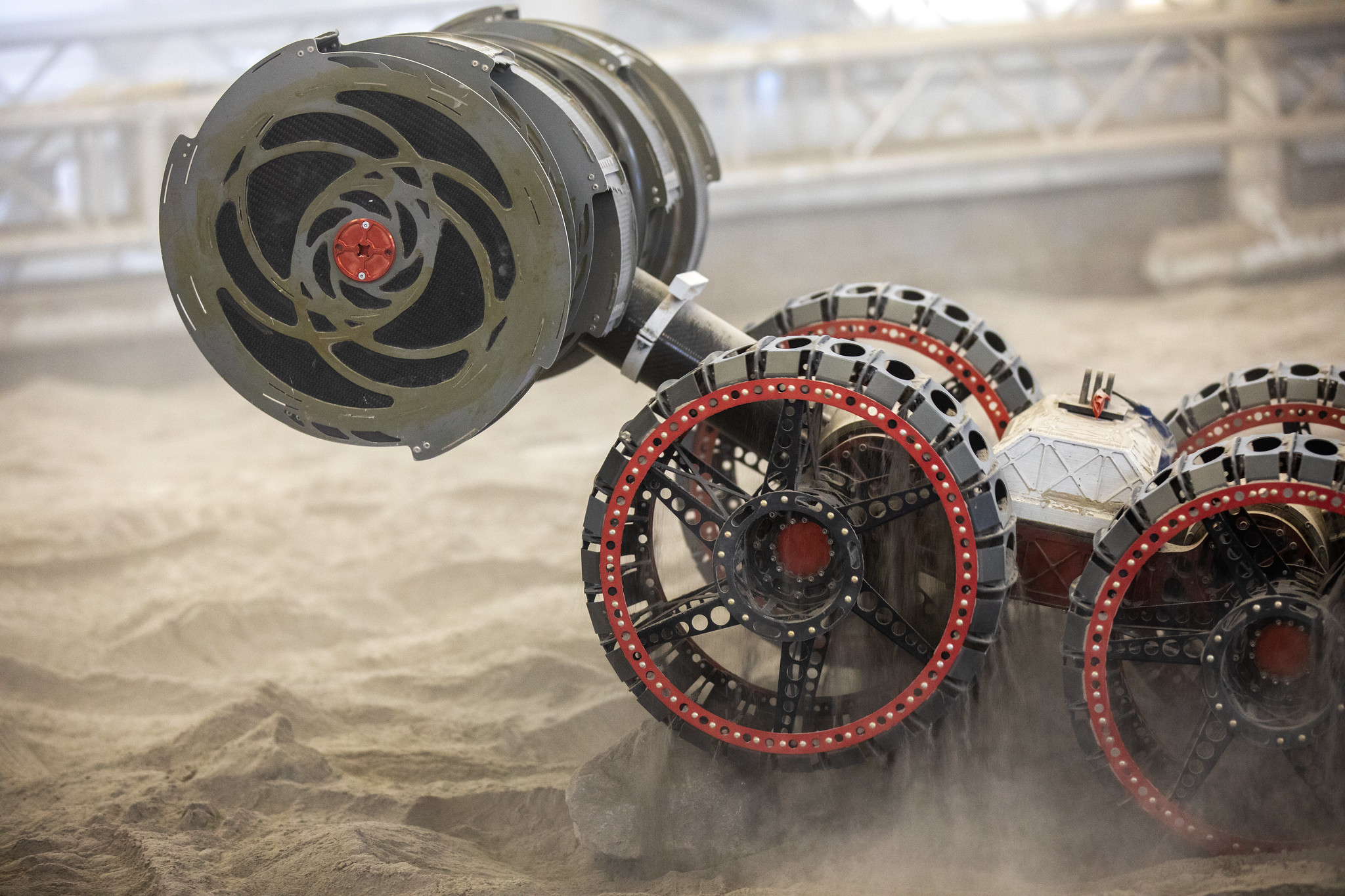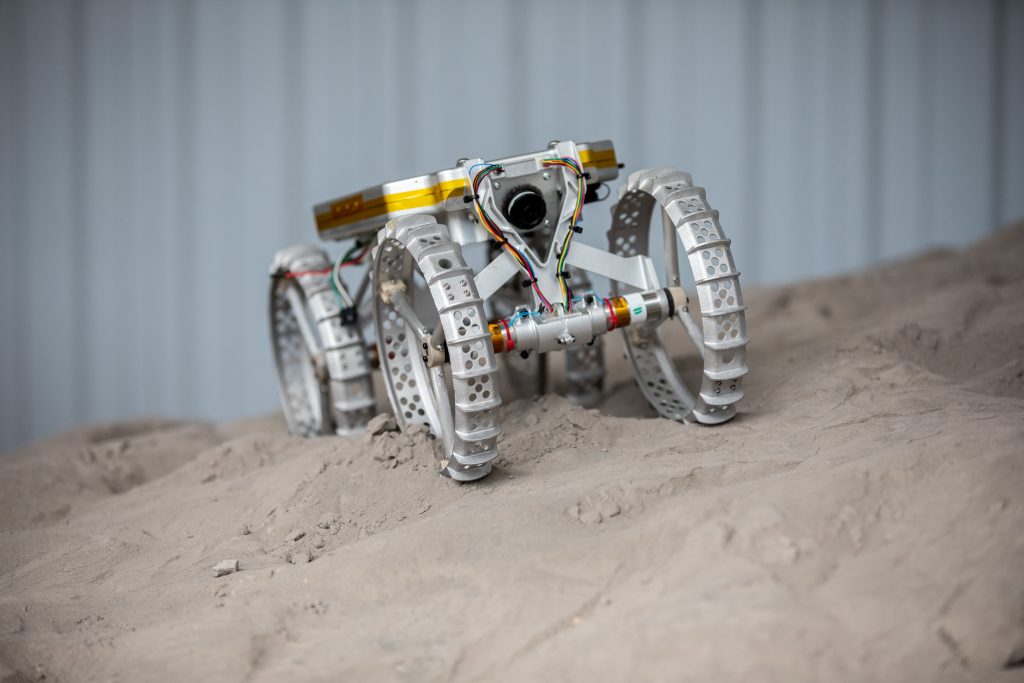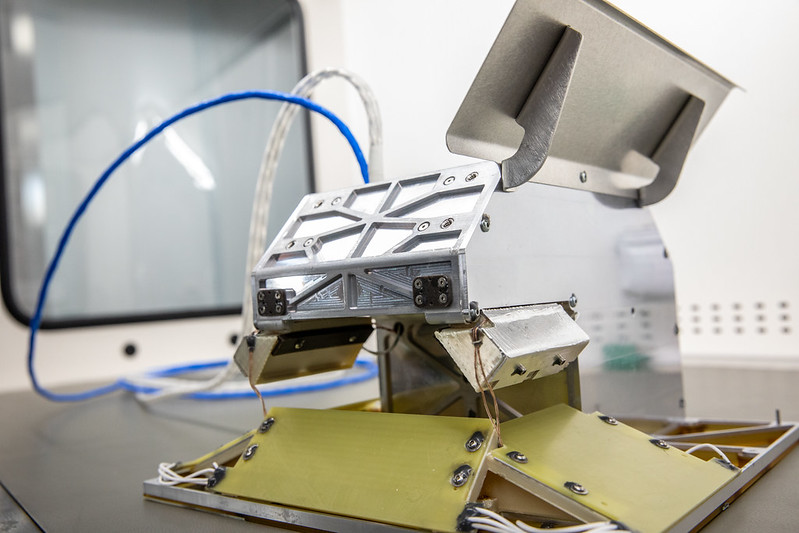
Swamp Works
Philosophy
Swamp Works is a hands-on, lean development environment for innovation at NASA’s Kennedy Space Center in Florida. Swamp Works develops innovative exploration mission solutions through a highly collaborative approach, leveraging partnerships across NASA, industry, and academia.
CAPABILITIES
The goal of Swamp Works is to accelerate innovation for NASA to benefit space exploration and everyone living on Earth. Researchers and scientists take ideas from concept, through development, and into application. They perform repeated testing in the early stages to incorporate design improvements as early as possible in the development phase. This development approach helps provide government and commercial space ventures with technologies needed to support NASA’s missions, including working and living on the surface of the Moon and eventually on other bodies in our solar system.
Current capabilities include facilities and world-class expertise from the Exploration Research and Technology Programs at Kennedy in such areas as granular mechanics and regolith operations; electrostatics and surface physics; robotics integration, checkout, and assembly; and advanced manufacturing. Staffed with engineers, physicists, and chemists, the developers use a “make it, test
it, and improve it” model of work, in which projects often undergo several generations of builds, each an inexpensive attempt to
improve on the one before. This approach also maintains continuity of knowledge between generations of designs because the same team works on many phases of development. This iterative approach provides multiple incremental advances during development that can lead to quantum leaps in technology advancement. Open collaboration allows researchers to learn from each other and ask questions during a technology’s development.
Technologies developed at Swamp Works play a major role across multiple programs, including NASA’s Artemis program. These
advancements help provide humans with the capabilities that will be needed for living and exploring on the surfaces of the Moon, and, one day, Mars.
Swamp Works investigations are funded through NASA’s Space Technology, Exploration Systems Development, and Space
Operations Mission Directorates; as well as NASA’s Mission Support Directorate, various NASA centers, and/or through partnership
agreements with private industry.

Astrobotic’s CubeRover – a lightweight, modular planetary rover – undergoes mobility testing inside the Granular Mechanics and Regolith Operations (GMRO) Laboratory’s regolith pit at NASA Kennedy Space Center’s Swamp Works facility on June 30, 2022. Astrobotic – a Pittsburgh-based space robotics company – is using the GMRO lab’s regolith bin, which holds approximately 120 tons of lunar regolith simulant, to depict how the company’s CubeRover would perform on the Moon. NASA’s Small Business Innovation Research program provided the funding for initial development, and a $2 million Tipping Point award from the agency has provided additional funding for continued development into a more mature rover. Photo credit: NASA/Glenn Benson
AREAS OF FOCUS
Swamp Works performs development work in a wide range of areas including:
- Granular Mechanics and Regolith Operations: This team studies the mechanics of materials
in a launch pad environment. The focus is on the mechanics of soil at lunar and Martian spaceports; how to excavate the soil to prepare berms, landing pads, and roads; and how to model the blowing of soil or other materials in a rocket exhaust plume to
predict blast effects. This area also develops technologies for handling lunar and Martian regolith, including excavator technologies and the pneumatic transport and magnetic handling of soil. The team studies the basic physics and geology of lunar and Martian soil to support soil-handling technologies, including particle sizing, particle shapes, bulk mechanical properties of
the soil, soil compaction, field sampling technologies, and laboratory testing protocols.
- Electrostatics and Surface Physics: This team performs scientific investigations to protect flight hardware and launch equipment from the phenomenon of electrostatic discharges, commonly known as sparks. In addition, the team studies lunar and Martian dust and the physics behind the particles’ dynamic electrical states. They also develop new technologies that leverage electrostatics to solve problems, such as filtering dust from air or repelling dust off surfaces using electrostatic forces.

Inside of the Electrostatics and Surface Physics Laboratory at NASA’s Kennedy Space Center in Florida, an electrodynamic dust shield (EDS) is in view on Jan. 18, 2023. The dust shield is one of the payloads that will fly aboard Firefly Aerospace’s Blue Ghost lunar lander as part of NASA’s Commercial Lunar Payload Services (CLPS) initiative. The CLPS initiative is a key part of NASA’s Artemis lunar exploration efforts. Photo credit: NASA/Cory Huston